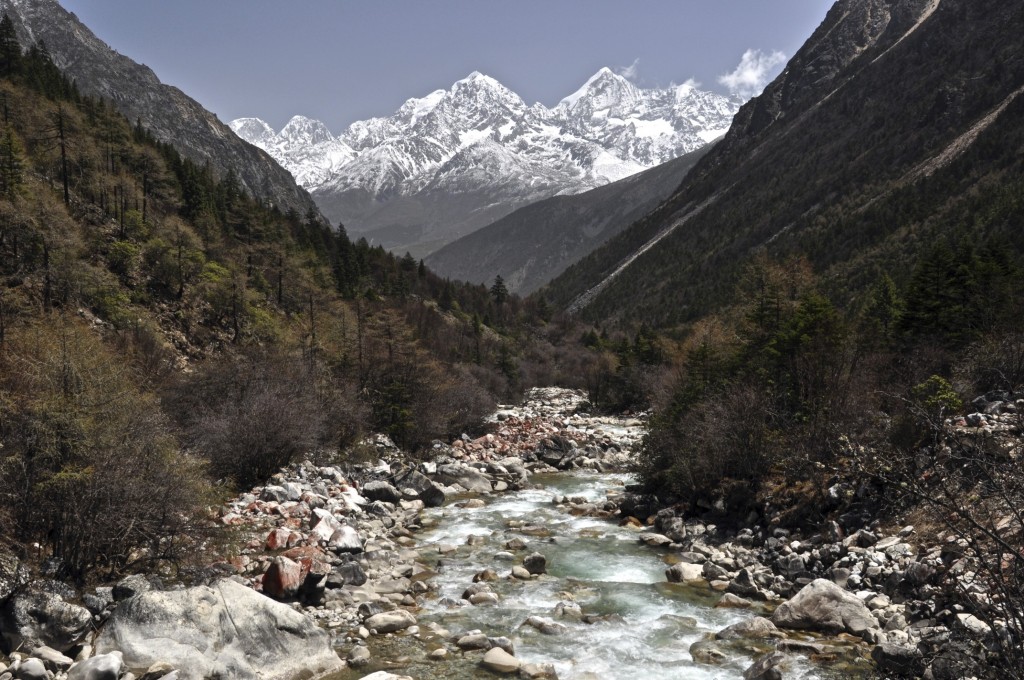 Ganzi/Garnze Tibetan Autonomous Prefecture དཀར་མཛེས་བོད་རིགས་རང་སྐྱོང་ཁུལ་ in western Sichuan covers an area of 151,078 square kilometers (58,331 square miles) and is located in the traditional Tibetan region of Kham. It is approximately the same size as the US state of New York and about half the size of Italy. It has a population of 1 million people, with Kham Tibetans making up 78% of the population. Of the 5 prefectures that make up the Kham region of Tibet, Garnze has highest number of Tibetans. Garnze is covered with high snow-capped peaks, alpine forests and deep river valleys. It is easily one of the most scenic parts of the Tibetan Plateau. Farming communities are found throughout the prefecture, though yak herding nomads can also be found in the higher elevation counties of Lithang (Litang), Sershul (Shiqu) and Nyarong (Xinlong). Elevation varies in the prefecture. The high grasslands of Sershul county sit between 4000 meters and 4500 meters while the fertile farmlands of Derong county lie at only 2300 meters.
Ganzi/Garnze Tibetan Autonomous Prefecture དཀར་མཛེས་བོད་རིགས་རང་སྐྱོང་ཁུལ་ in western Sichuan covers an area of 151,078 square kilometers (58,331 square miles) and is located in the traditional Tibetan region of Kham. It is approximately the same size as the US state of New York and about half the size of Italy. It has a population of 1 million people, with Kham Tibetans making up 78% of the population. Of the 5 prefectures that make up the Kham region of Tibet, Garnze has highest number of Tibetans. Garnze is covered with high snow-capped peaks, alpine forests and deep river valleys. It is easily one of the most scenic parts of the Tibetan Plateau. Farming communities are found throughout the prefecture, though yak herding nomads can also be found in the higher elevation counties of Lithang (Litang), Sershul (Shiqu) and Nyarong (Xinlong). Elevation varies in the prefecture. The high grasslands of Sershul county sit between 4000 meters and 4500 meters while the fertile farmlands of Derong county lie at only 2300 meters.
Garnze prefecture used to be part of the now defunct Xikang province. In 1939 the government of the Republic of China created Xikang province with Dartsendo (Kangding) as the capital. Xikang covered the far eastern region of Kham. After the Communist People’s Republic of China took control of the region from the Republic of China (Kuomintang) in 1950, Xikang was divided with everything west of the Yangtze River becoming Chamdo Territory and everything east of the Yangtze remaining Xikang province. In 1955, Xikang province was merged into Sichuan province and renamed Garnze Tibetan Autonomous Prefecture. In 1965, Chamdo Territory became part of the newly formed Tibet Autonomous Region and was renamed Chamdo Prefecture. While the capital of Sichuan province is Chengdu, the prefecture capital of Garnze remains Dartsendo.
Garnze prefecture is divided into 18 counties:
- 1.Kangding/Dardo 康定/དར་མདོ་
- 2.Luding/Jagsam 泸定/ལྕགས་ཟམ་
- 3.Danba/Rongtrak 丹巴/རོང་བྲག་
- 4.Jiulong/Gyesur 九龙/བརྒྱད་ཟུར་
- 5.Yajiang/Nyachuka 雅江/ཉག་ཆུ་ཁ་
- 6.Daofu/Dawu 道孚/རྟའུ་
- 7.Luhuo/Drango 炉霍/བྲག་འགོ་
- 8.Ganzi/Garnze 甘孜/དཀར་མཛེས
- 9.Xinlong/Nyarong 新龙/ཉག་རོང་
- 10.Dege/Derge 德格/སྡེ་དགེ་
- 11.Baiyu/Pelyul 白玉/དཔལ་ཡུལ་
- 12.Shiqu/Sershul 石渠/སེར་ཤུལ་
- 13.Seda/Sertar 色达/གསེར་ཐར་
- 14.Litang/Lithang 理塘/ལི་ཐང་
- 15.Batang/Bathang 巴塘/འབའ་ཐང་
- 16.Xiangcheng/Chaktreng 乡城/ཕྱག་འཕྲེང་
- 17.Daocheng/Dabpa 稻城/འདབ་པ་
- 18.Derong/Derong 得荣/སྡེ་རོང་
The capital of Garnze prefecture is Dartsendo དར་རྩེ་མདོ་, known as Kangding in Chinese. It is the largest town in the prefecture and has a population of around 90,000. There are multiple buses per day from Chengdu to Dartsendo. There are also buses each day from Dartsendo to all counties of Garnze prefecture with the exception of Shiqu/Sershul and Seda/Serthar. The Kangding airport is currently the 2nd highest commercial airport in the world at 4280 meters above sea level. The airport opened in April 2009. Currently, the airport only has weekly flights to Chengdu , though there are plans to extend service to Lhasa in the future. The airport is closed during the winter months.
Dartsendo sits in a beautiful valley along the banks of the Zheduo and Yala Rivers. These two rivers merge on the east end of town just below the towering Guoda Mountain. Dartsendo has long been the cultural boundary between Han Chinese and Tibetans. Roughly 40% of the population are Tibetans, 40% Han Chinese with the remaining 20% coming from smaller minority groups such as the Qiang, Yi and Hui. Colorful Tibetan nomads from the nearby grasslands often come into town to buy and sell goods.
Most travelers to Dartsendo stay only 1 or 2 days. However, there is enough to see and do in the area to keep one busy for several days. There are 4 Tibetan Buddhist monasteries in town. Ngachu Monastery, known as An Jue Si in Chinese, dates back to 1654. It sits downtown right across from the Kangding Hotel. Lhamo Tse Monastery (Nanwu Si) is on the far west end of Kangding about 2kms from downtown. Dordrak Monastery (Jinggang Si) is more than 400 years old. It is located next to Sally’s Knapsack Inn on the south end of town. Dentok Monastery (Paoma Si) lies on top of Mt. Paoma, which overlooks all of Kangding. You can hike up this mountain to reach the monastery or take the cable car to the top.
There are 2 main highways that run through Garnze prefecture. China National Highway 317, also known as the Northern Tibet-Sichuan Highway, begins in Chengdu and goes through the counties of Drango (Luhuo), Garnze (Ganzi) and Dege in northwestern Garnze prefecture before crossing into the Tibet Autonomous Region. China National Highway 318, or the Southern Tibet-Sichuan Highway, runs through the central part of the prefecture from Dartsendo (Kangding) west to Nyachuka (Yajiang), Lithang (Litang) and Bathang (Batang) before entering the Tibet Autonomous Region.
The Hengduan Mountain Range, which mostly runs north to south, extends through much of Garnze prefecture. The Yangtze, Meokong and Salween Rivers all cut deep gorges through this rugged range. The highest mountain in this range, and the highest mountain in Garnze prefecture, is Minya Konka མི་ཉག་གངས་དཀར་རི་བོ་, known in Chinese as Gongga Shan. This glaciated peak rises to 7556 meters. There are many other mountains in the prefecture that rise above 6000 meters, notably Trola Mountain in Dege county, which rises to 6168 meters and Mt. Chenresig in Dabpa county (Daocheng), which rises to 6032 meters.
The rugged mountains of Garnze prefecture offer some of the best hiking and trekking that the Tibetan Plateau has to offer. Excellent high altitude hiking can be done along the west face of Minya Konka. This trek begins just a short drive west from Dartsendo and takes 4 or 5 days to go from the trailhead to the Konka Monastery on the southwest face of the mountain. The Yading Nature Reserve also offers an excellent 2 day trek around Mt. Chenresig, the main holy mountain in the reserve. There is also great trekking around Trola Mountain in Dege county. Pick up a copy of Gary McCue’s Trekking Tibet book for more information on treks in the Dege area.
Lithang is well known across Tibet for its large annual horse festival, however this festival has not been held the past few years due to a political demonstration that took place in 2008. Smaller horse festivals do occur each year in the smaller townships across Lithang county. Contact Medok at the Potala Inn in Lithang for more information about summer horse festivals in the area. Horse festivals also occur in Sershul and in Lhagang (Tagong) each summer. Contact Angela at Chyoger Treks for more details on horse festivals near Lhagang.
The remote counties of Lithang, Nyarong (Xinlong), Garnze (Ganzi) and Sershul (Shiqu) are excellent places to go and see traditional nomadic culture. These counties have large expanses of grasslands filled with yaks. During the summer months these nomads live in traditional yak wool tents. The nomadic regions are difficult to reach, but are well worth the effort to get there.
Garnze prefecture, with all of its rich Tibetan culture and amazing scenery, is one of the best regions of the Tibetan Plateau to visit. Though this region does close from time to time due to Tibetan protests and unrest, no organized tour is required. Foreigners can travel this region freely on their own without any permits, tour guide or private vehicle. For more information about the Sichuan Part of Kham, send me an email at thelandofsnows@gmail.com.
Losang བློ་བཟང་

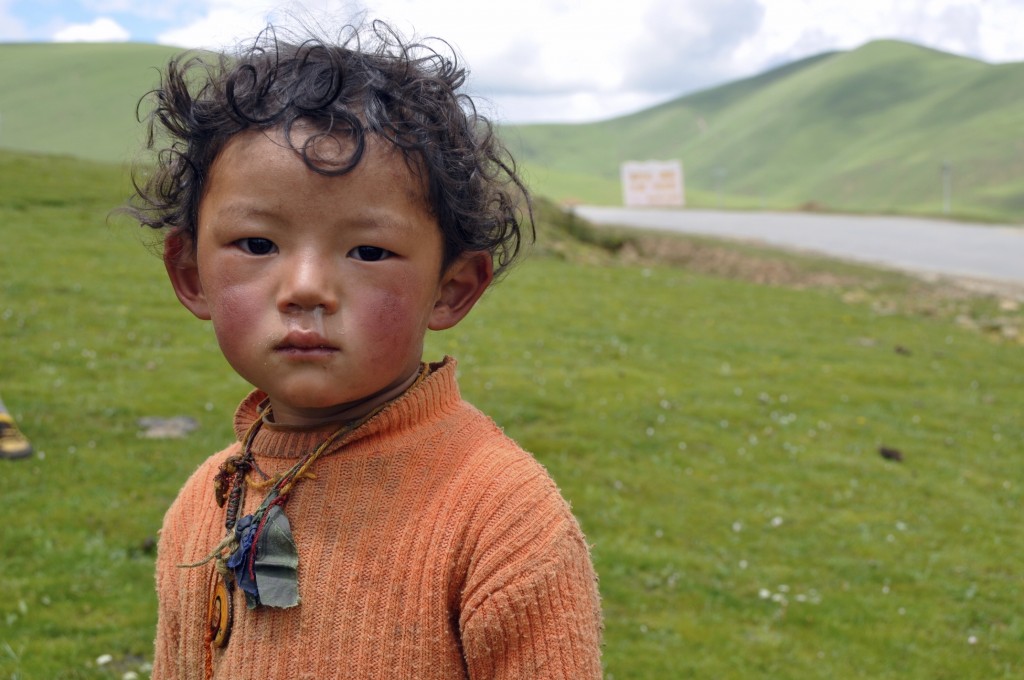
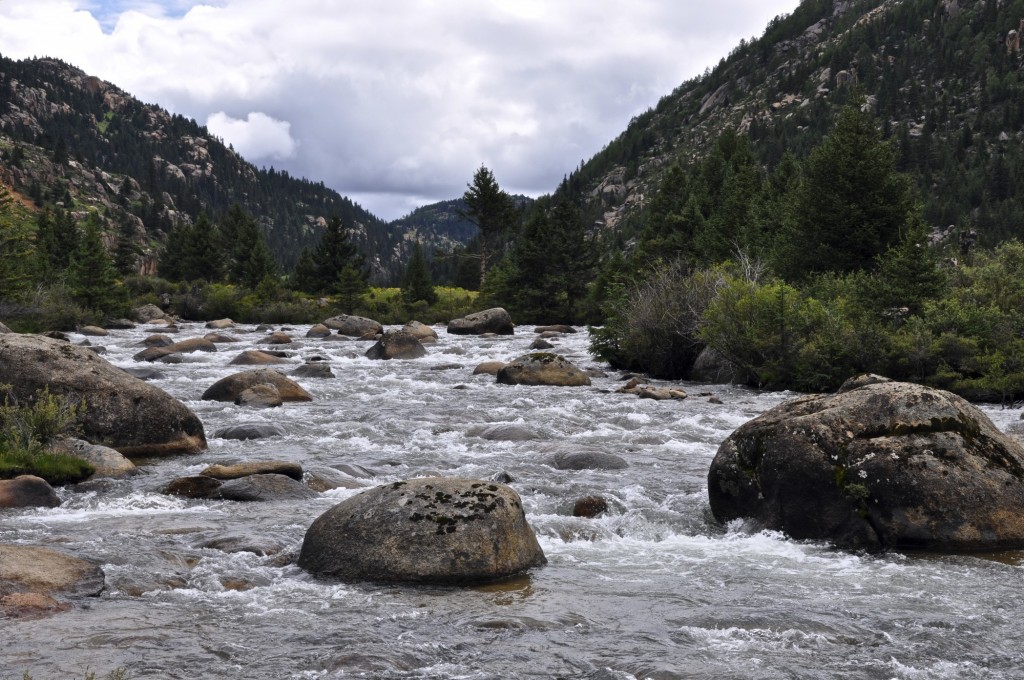
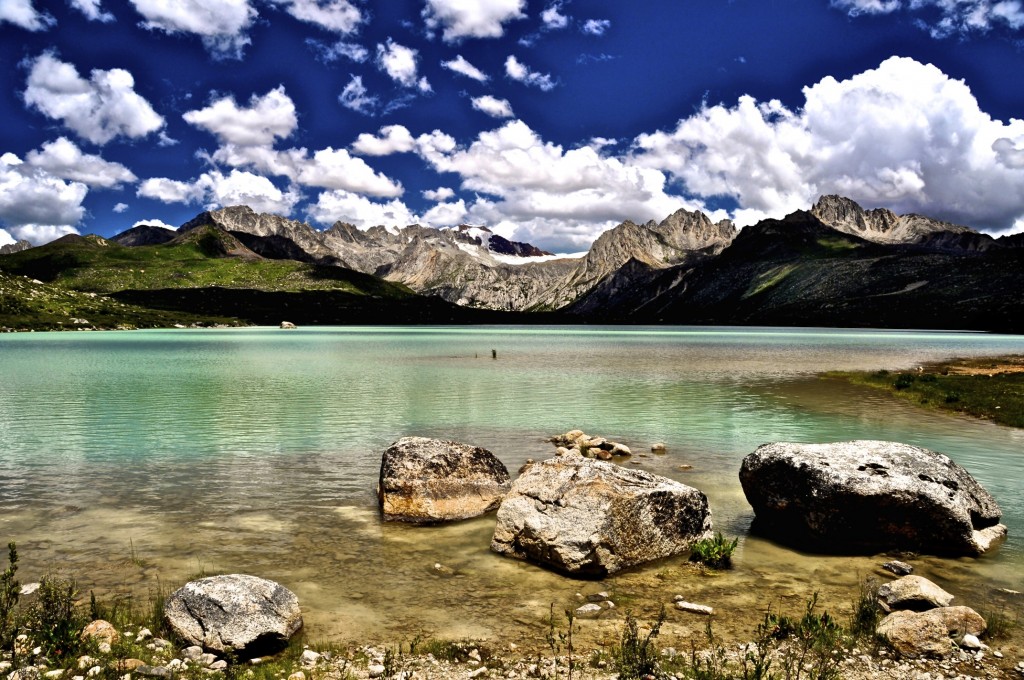
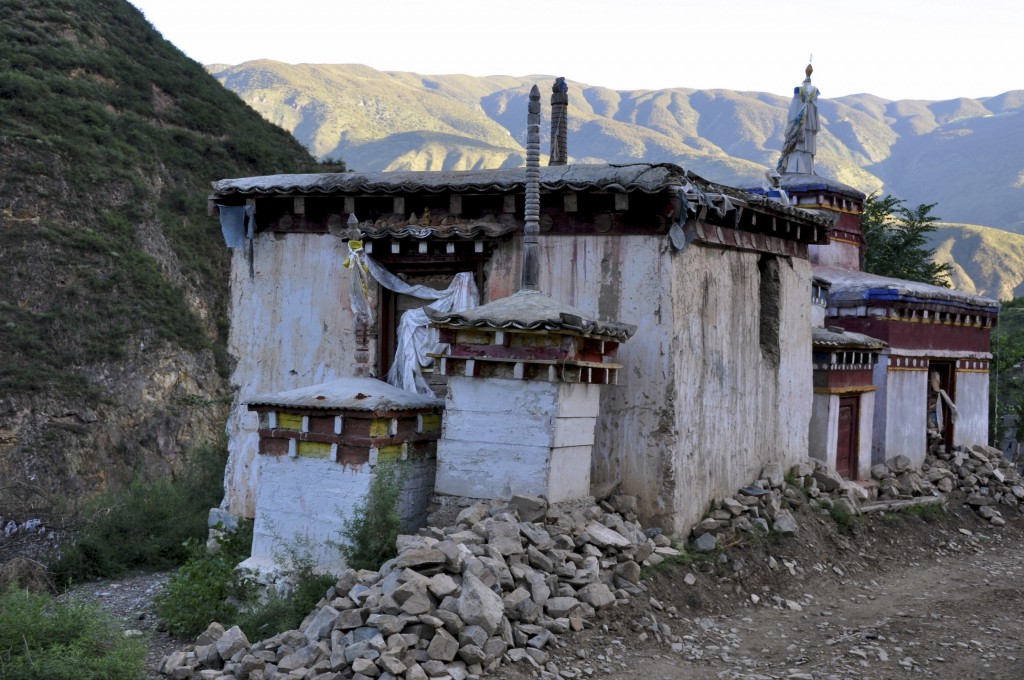
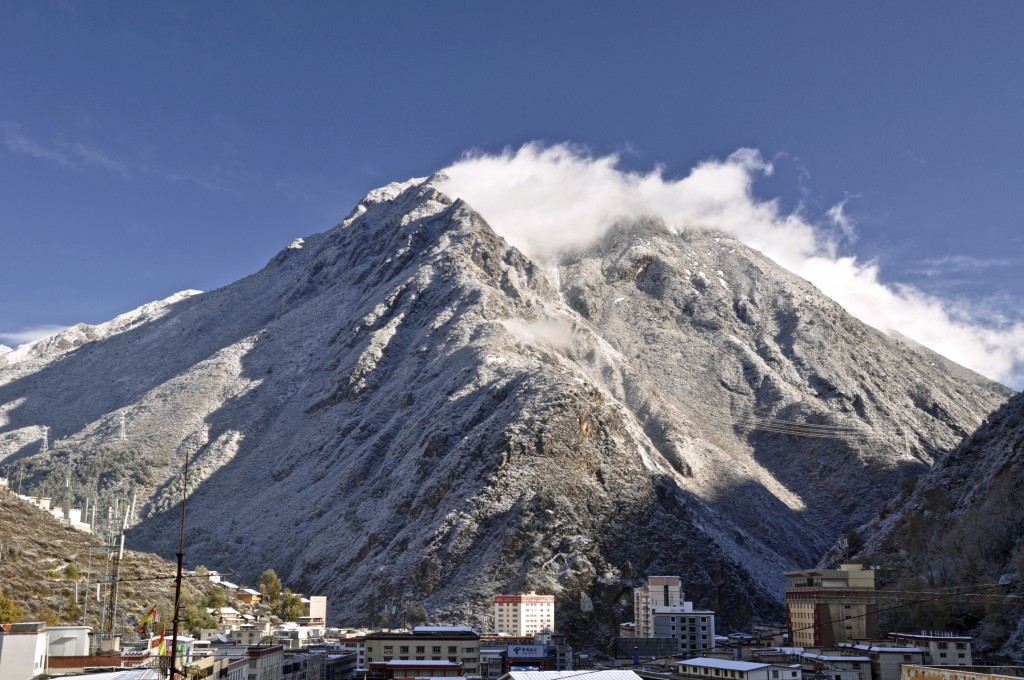
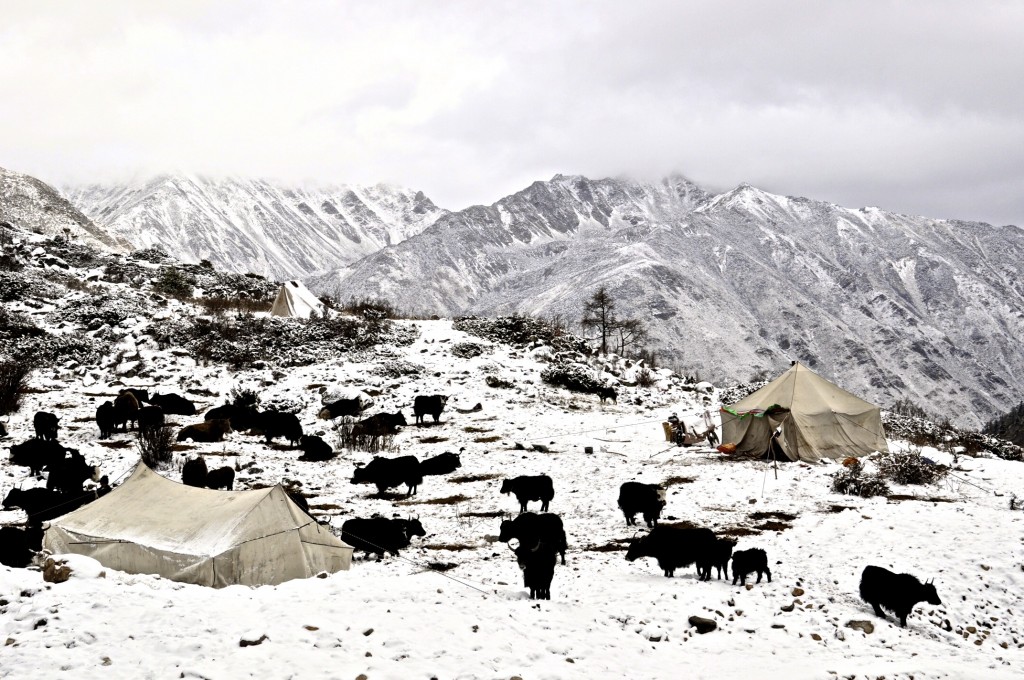
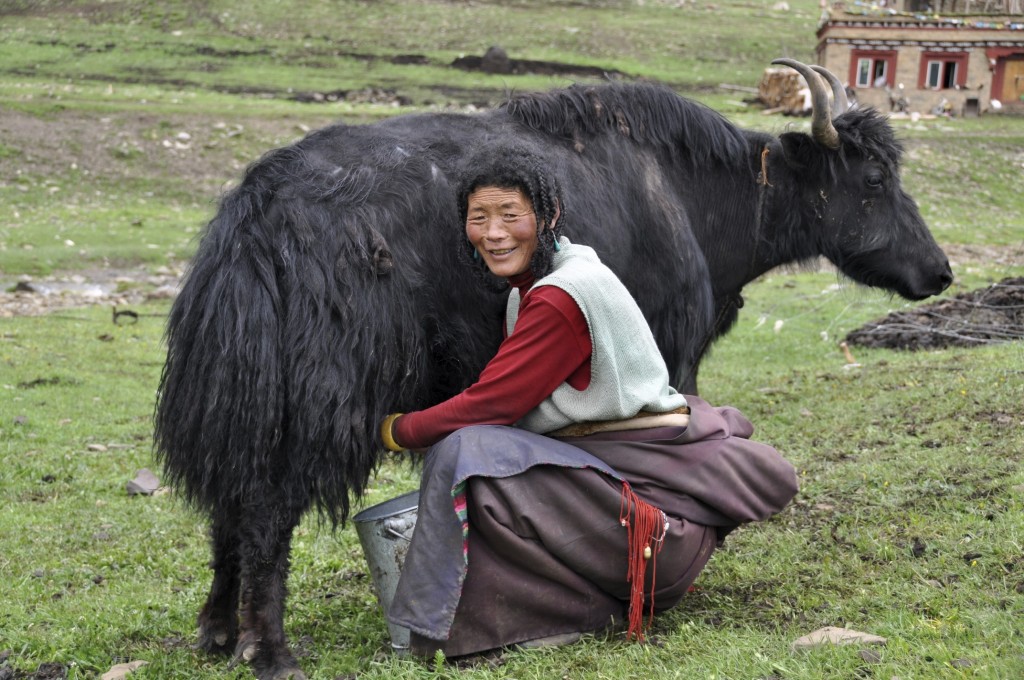
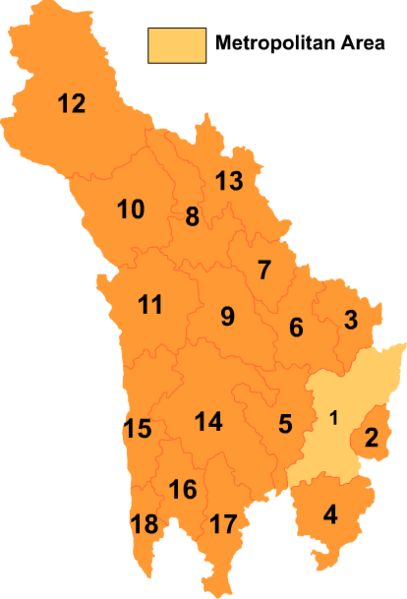
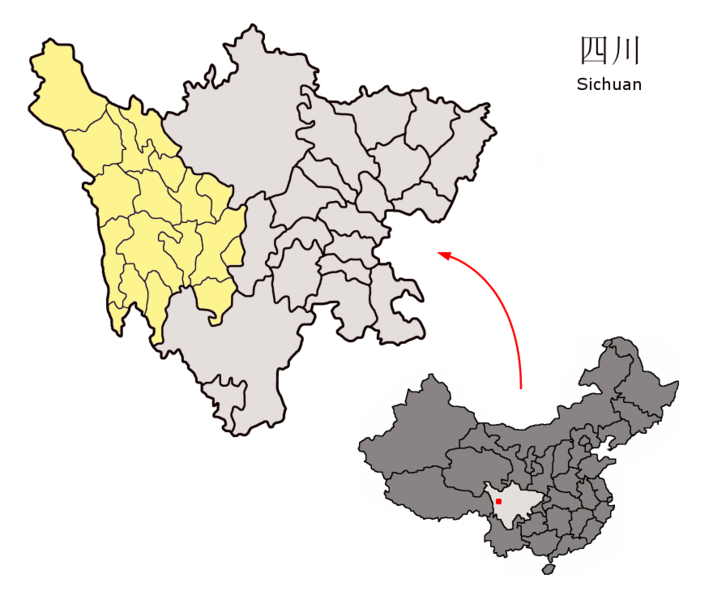
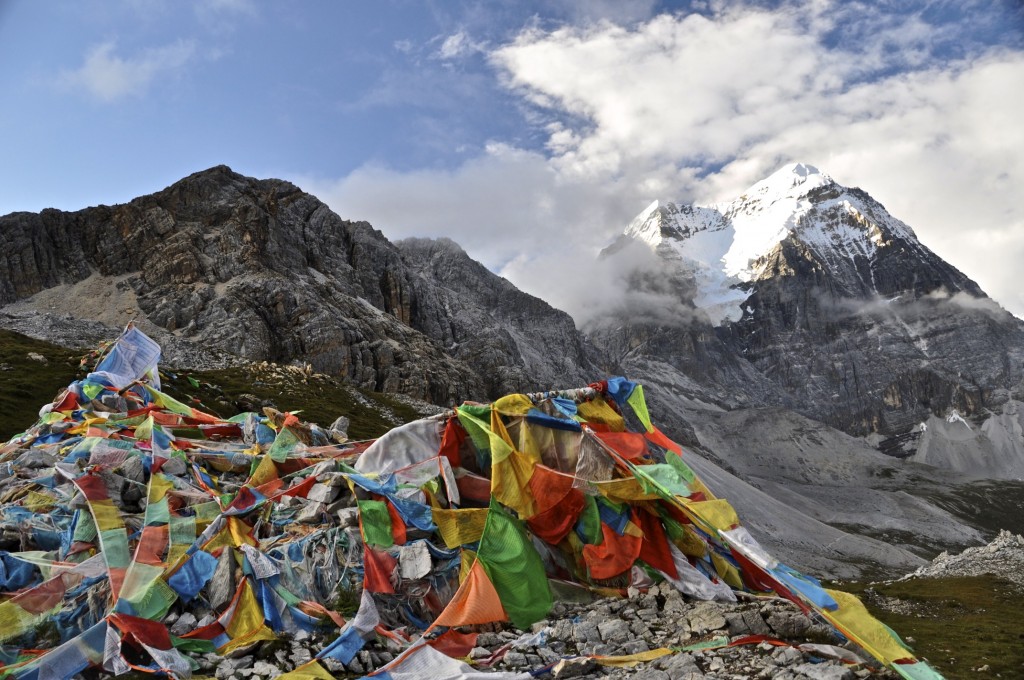
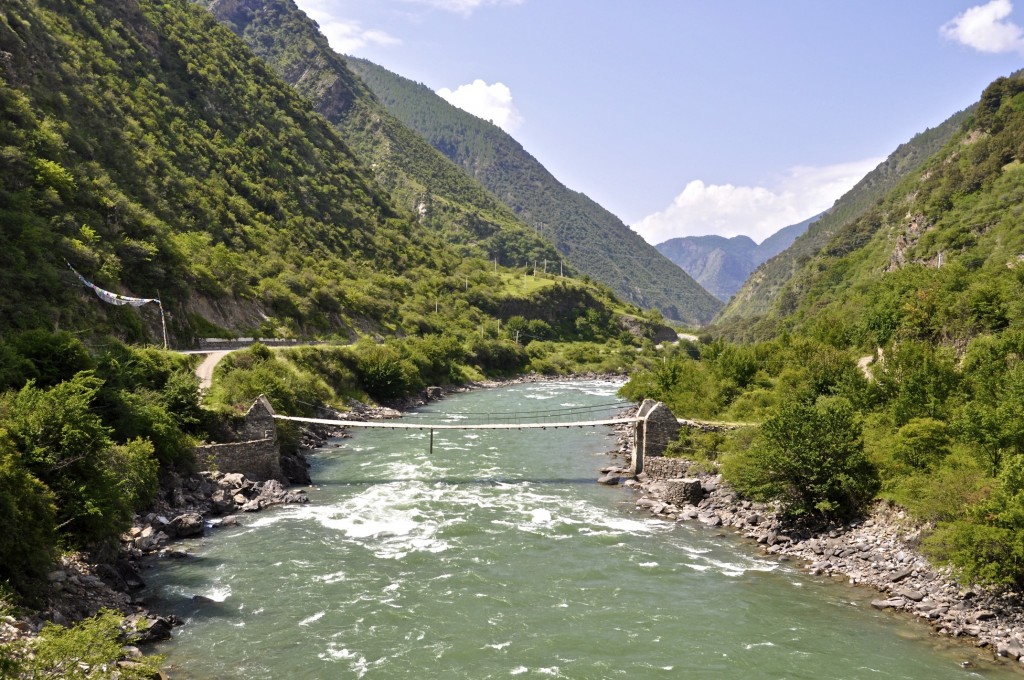
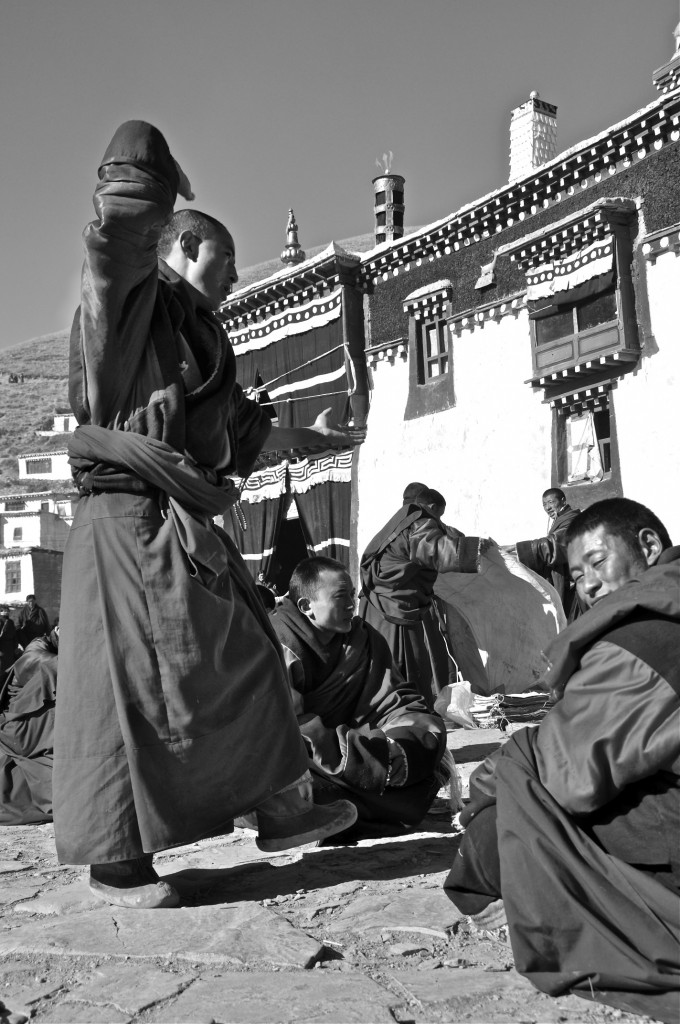
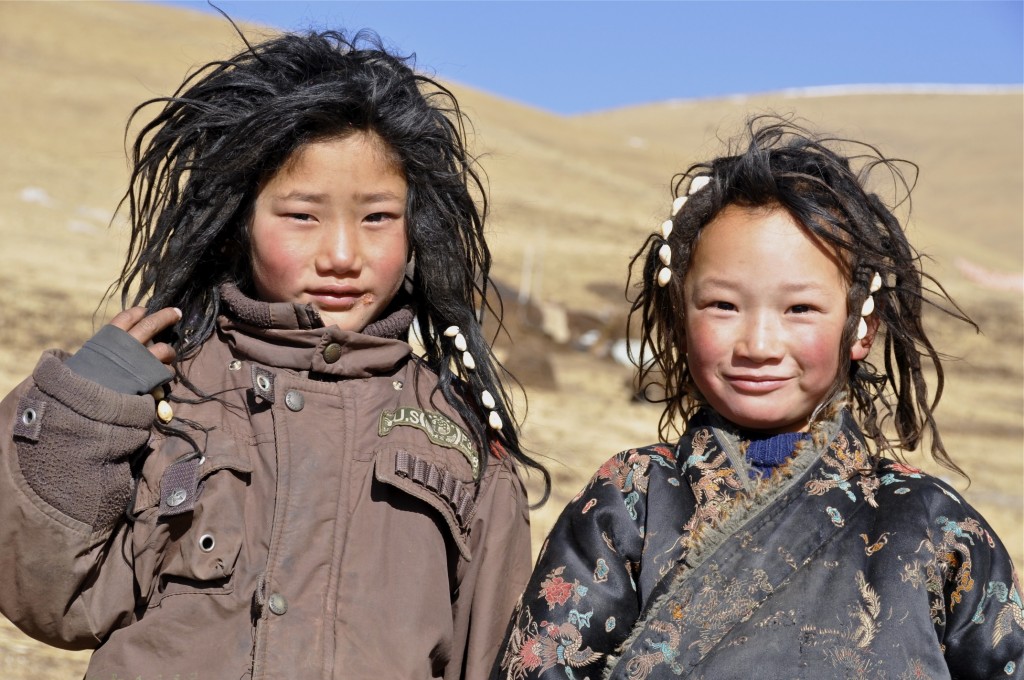
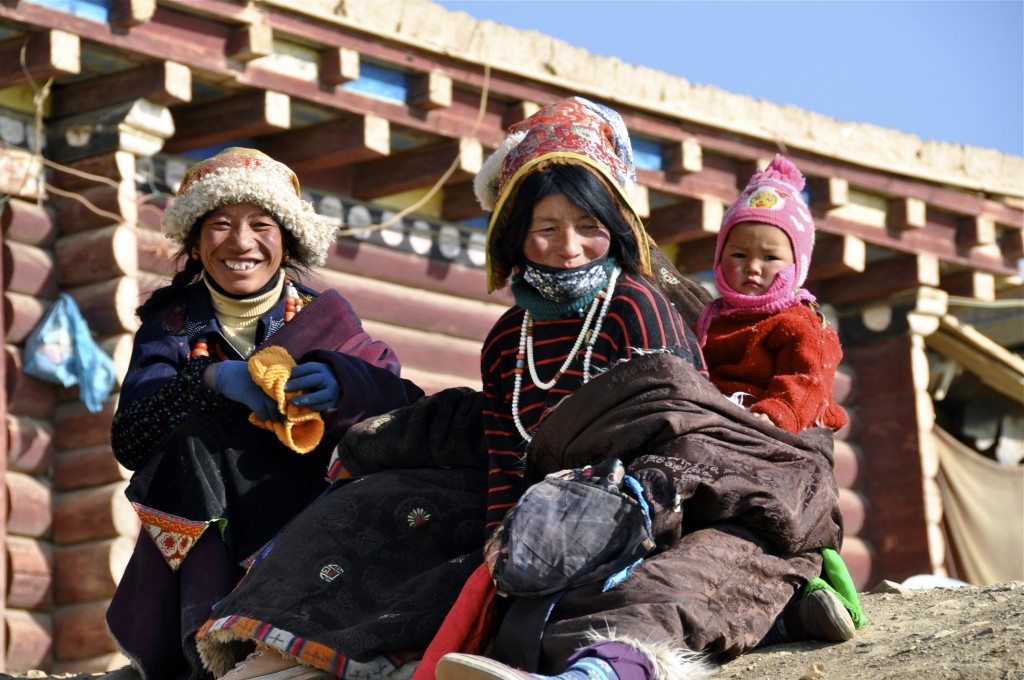
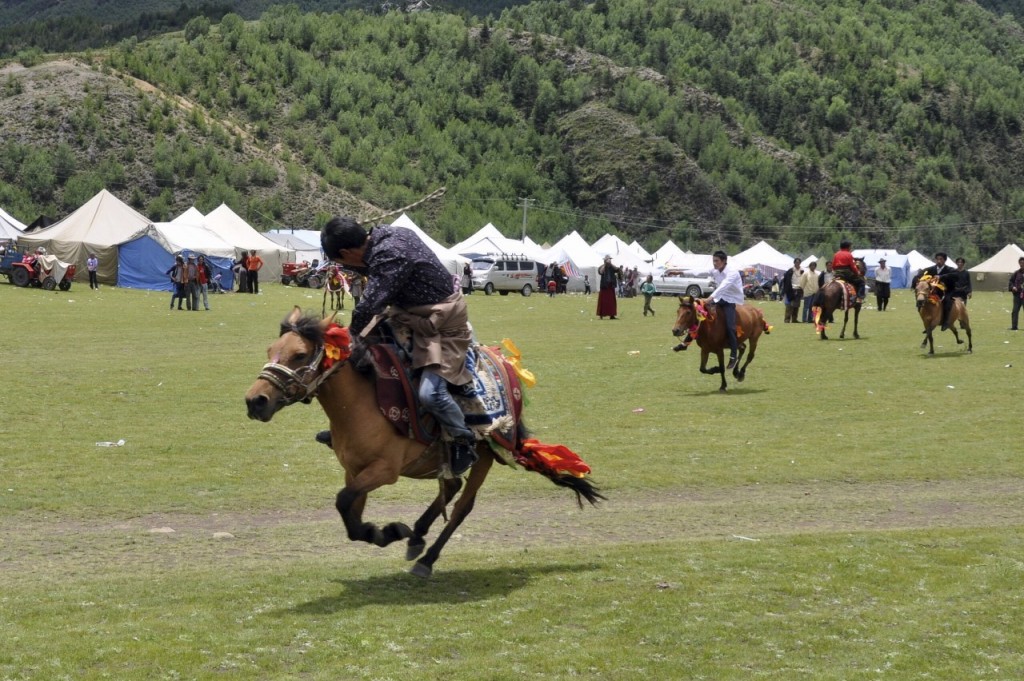
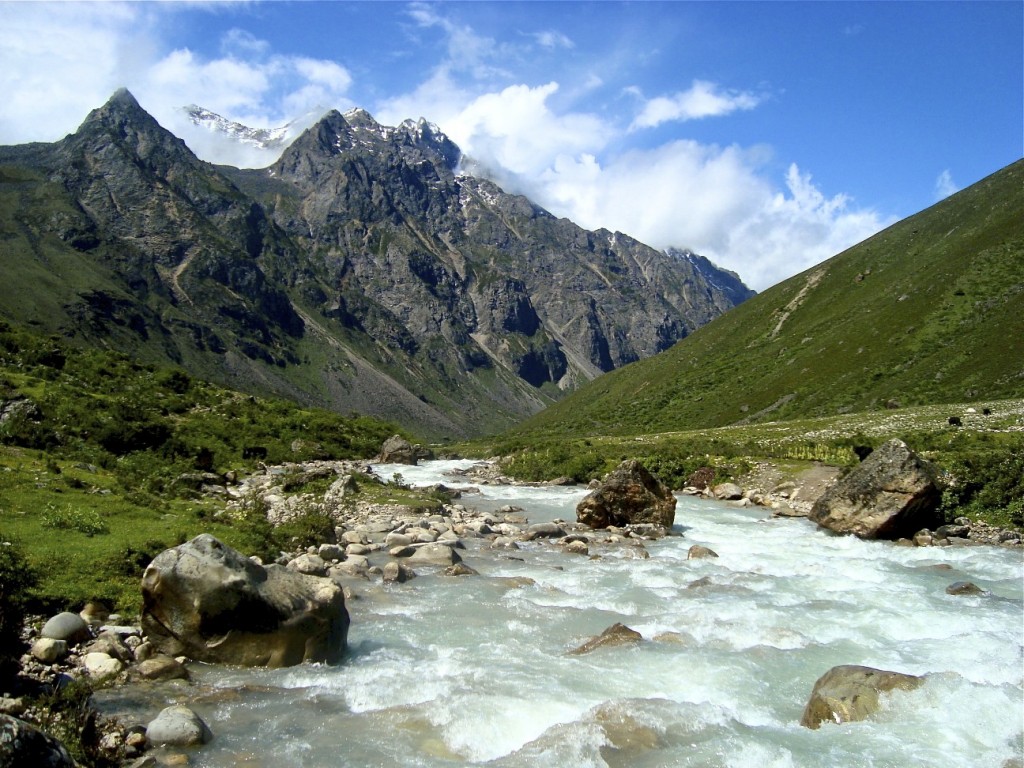
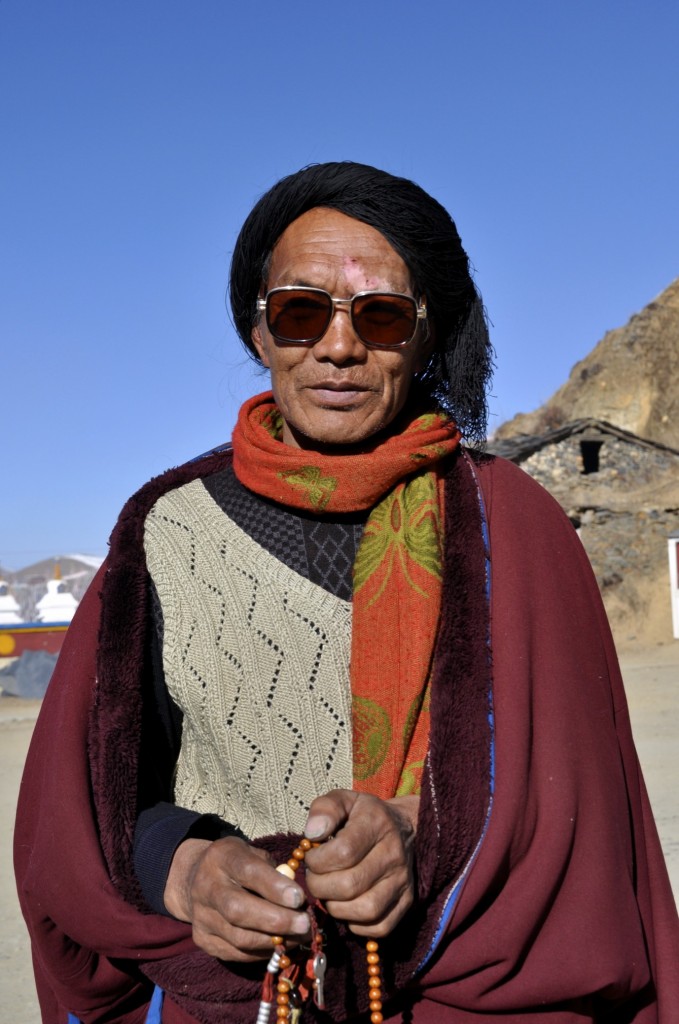
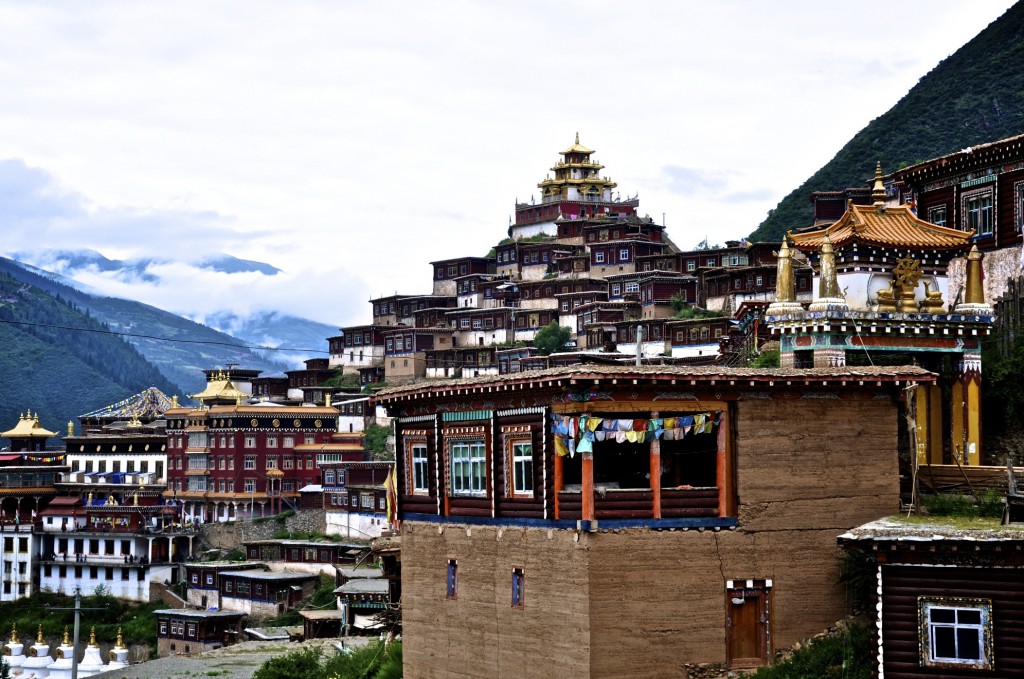
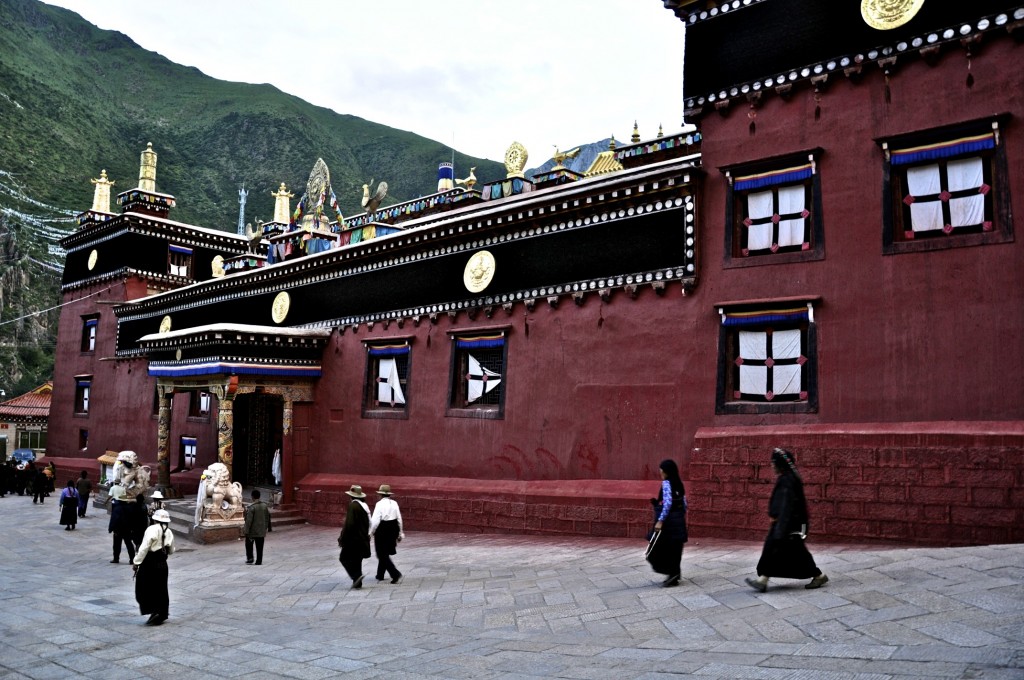
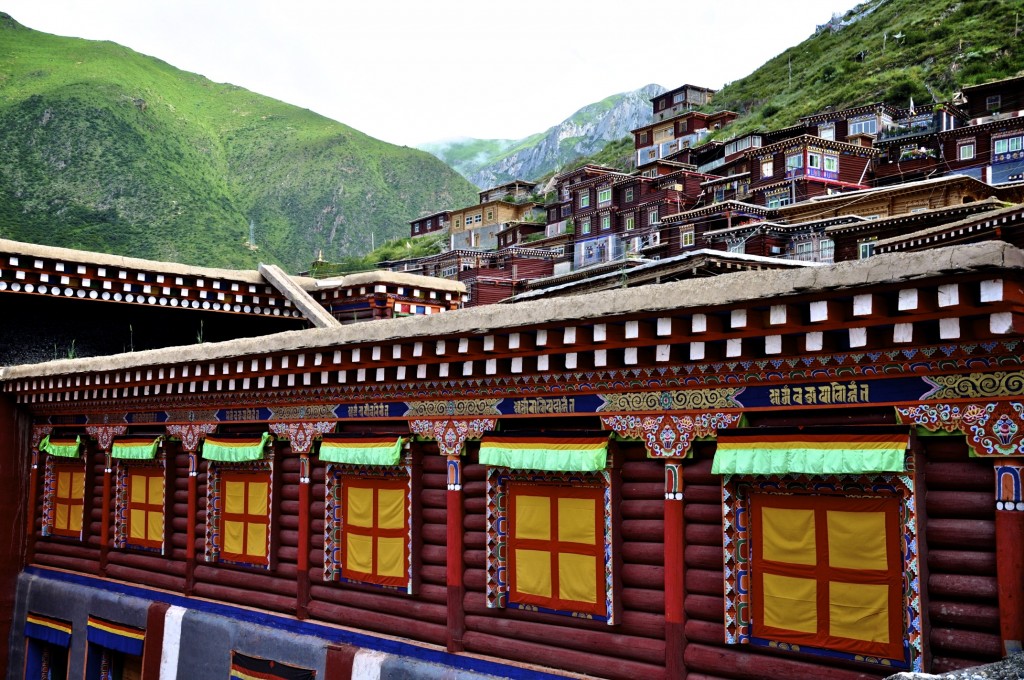
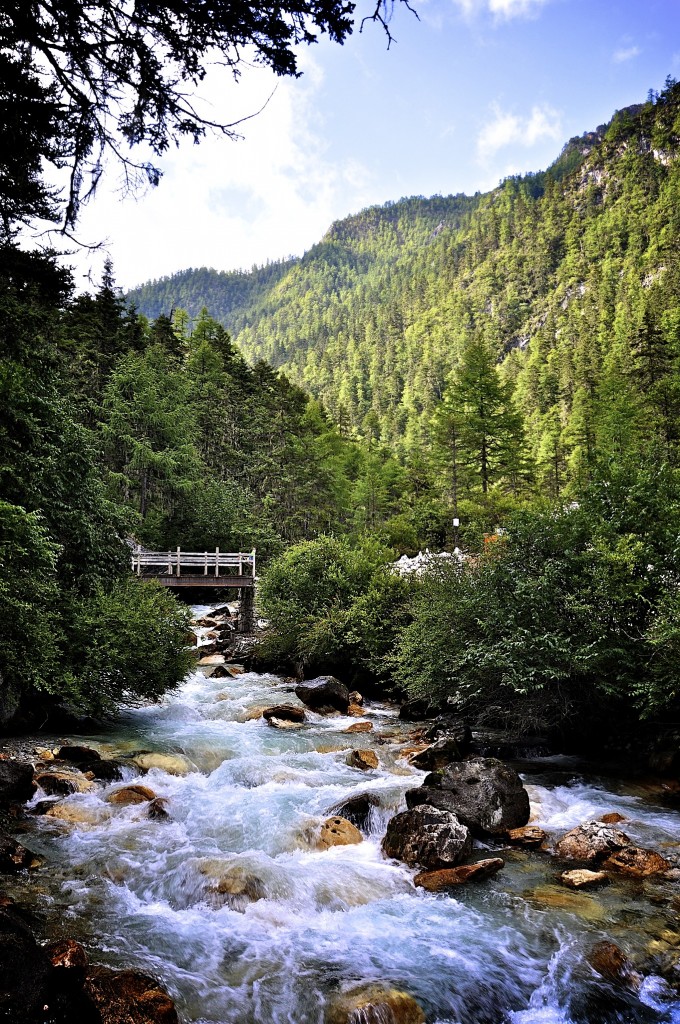
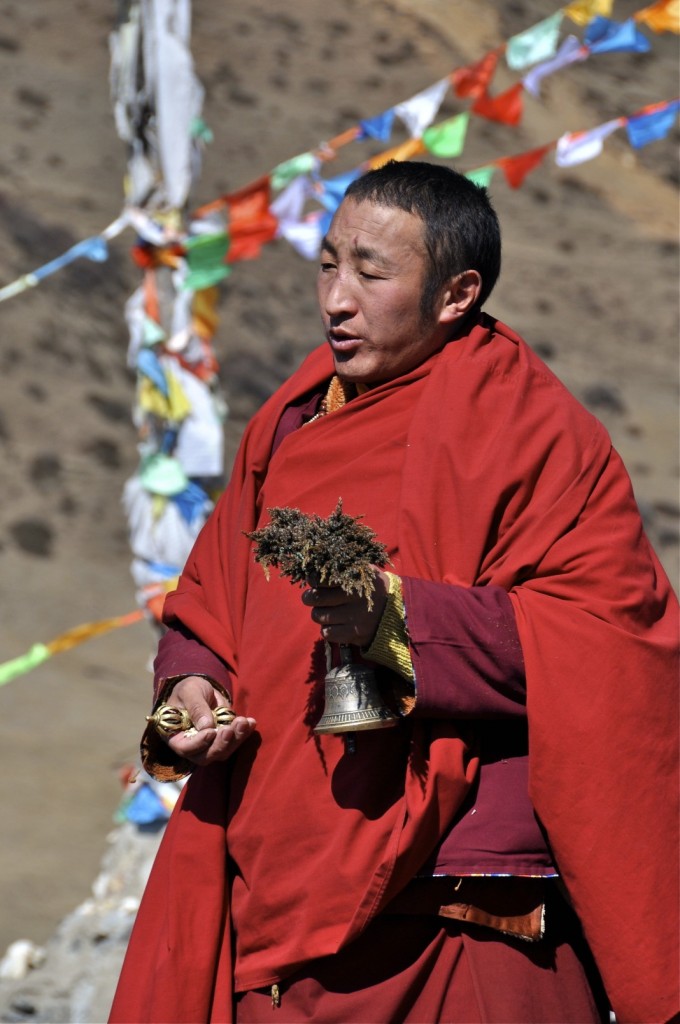
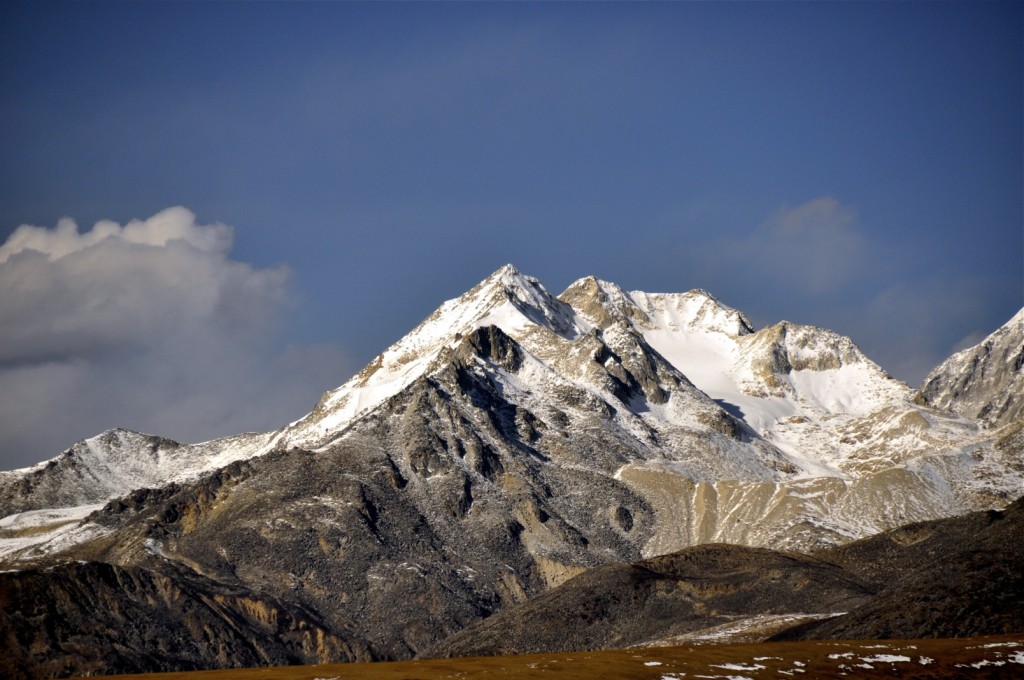
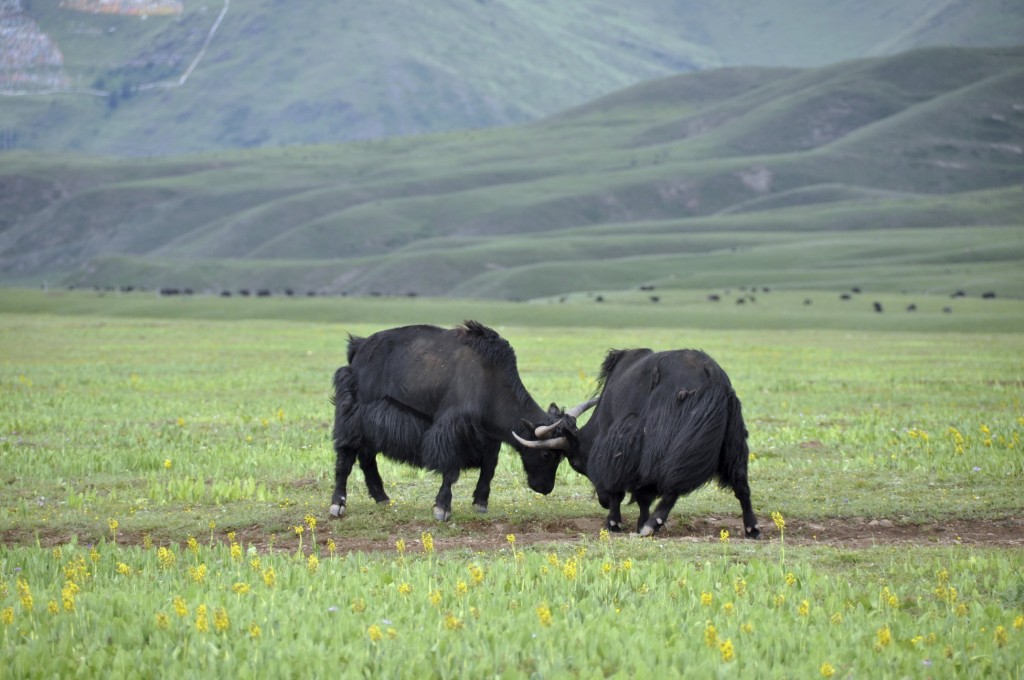
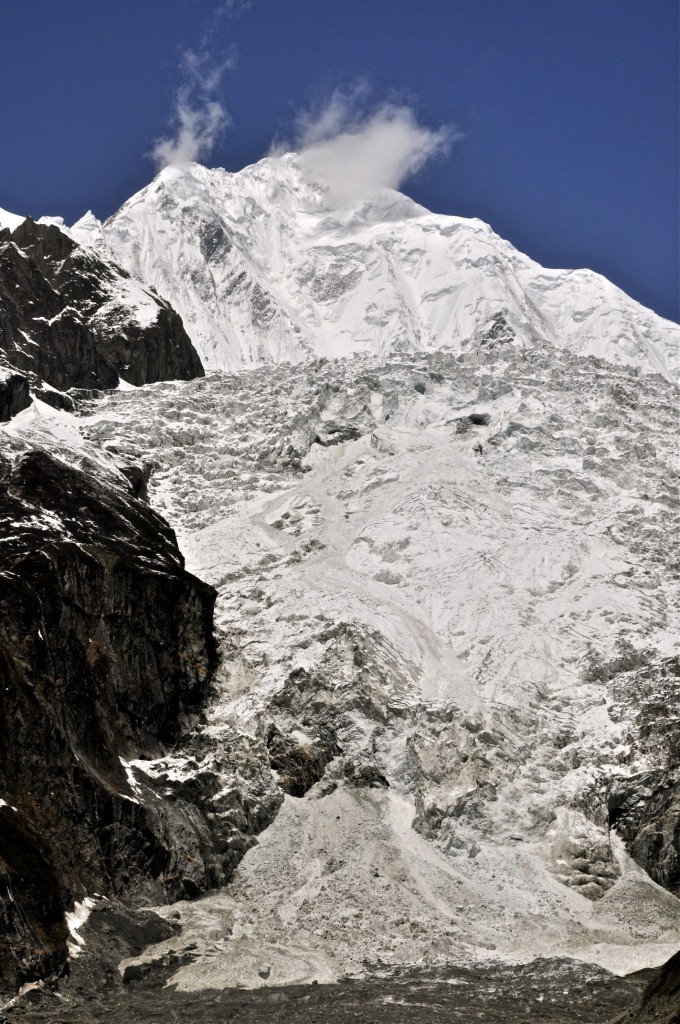
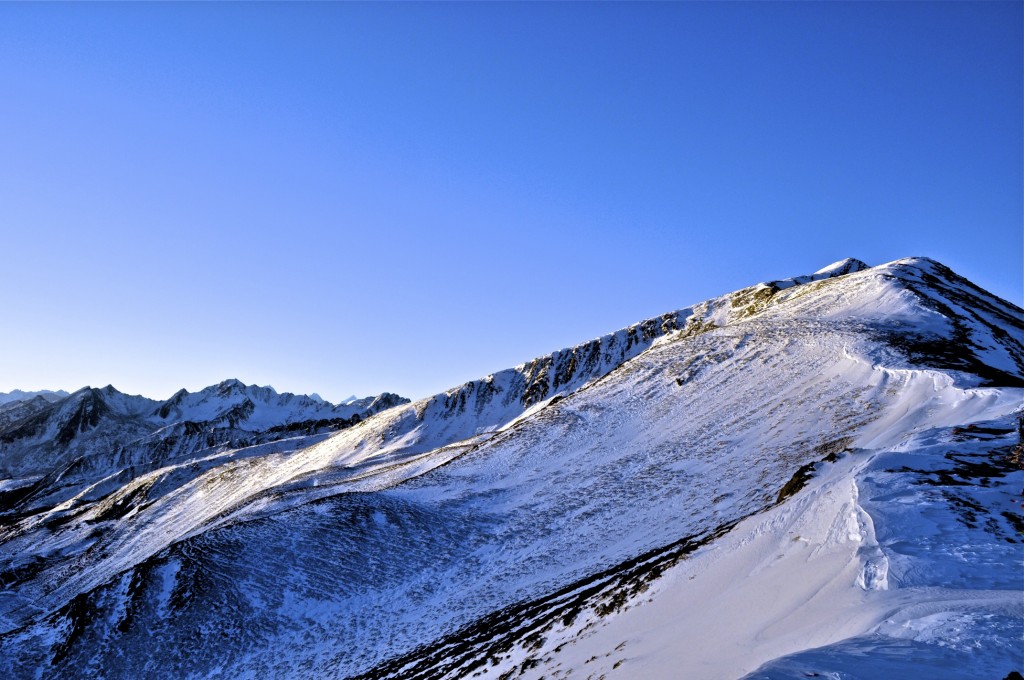
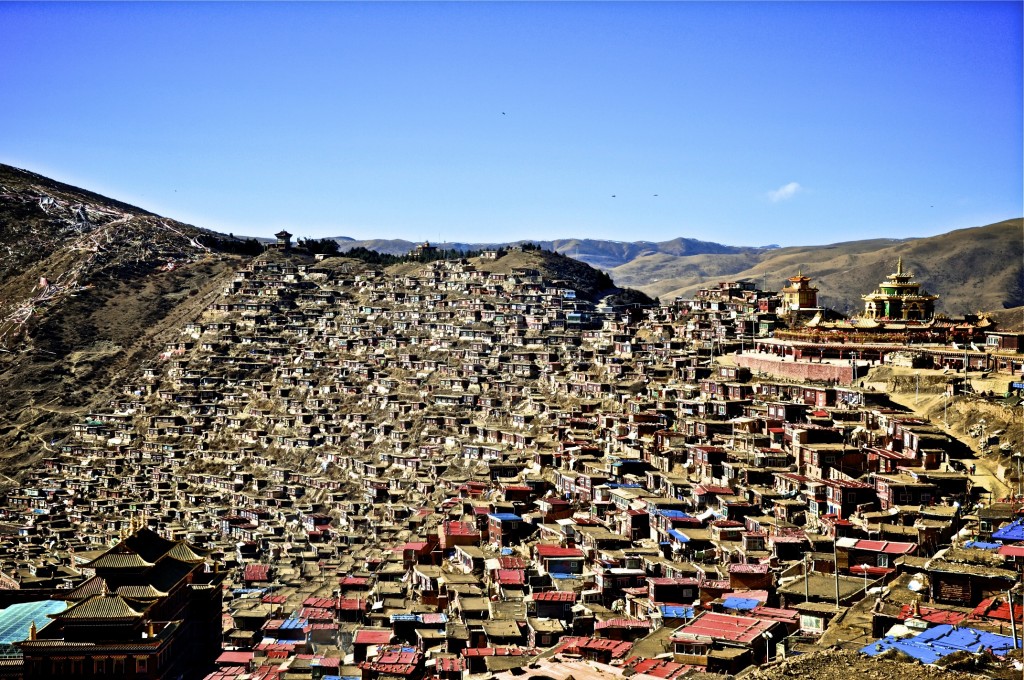
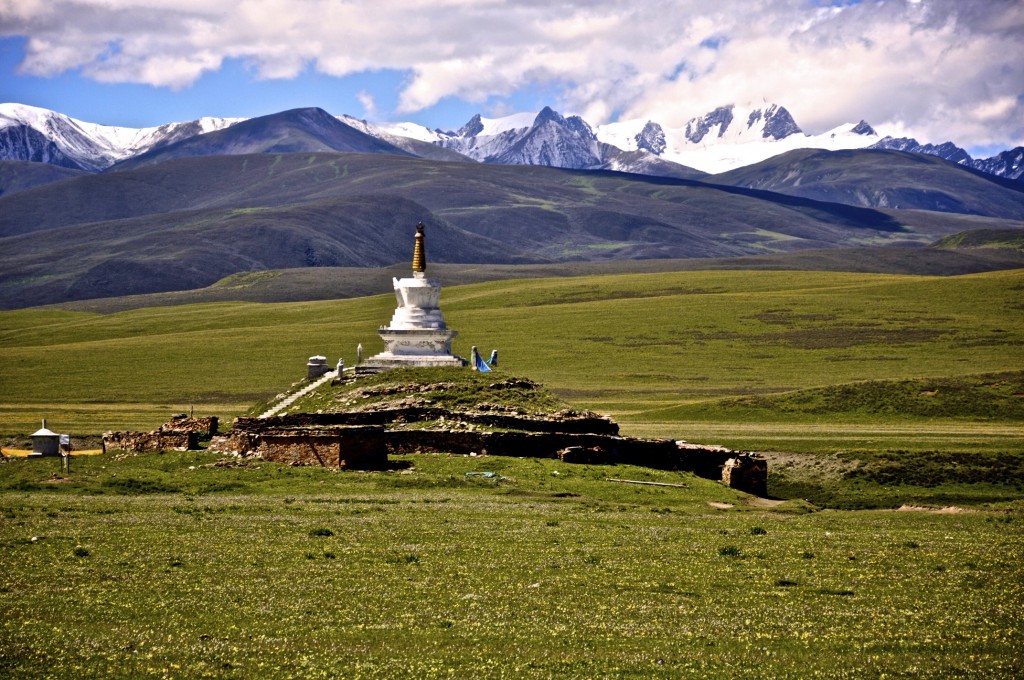
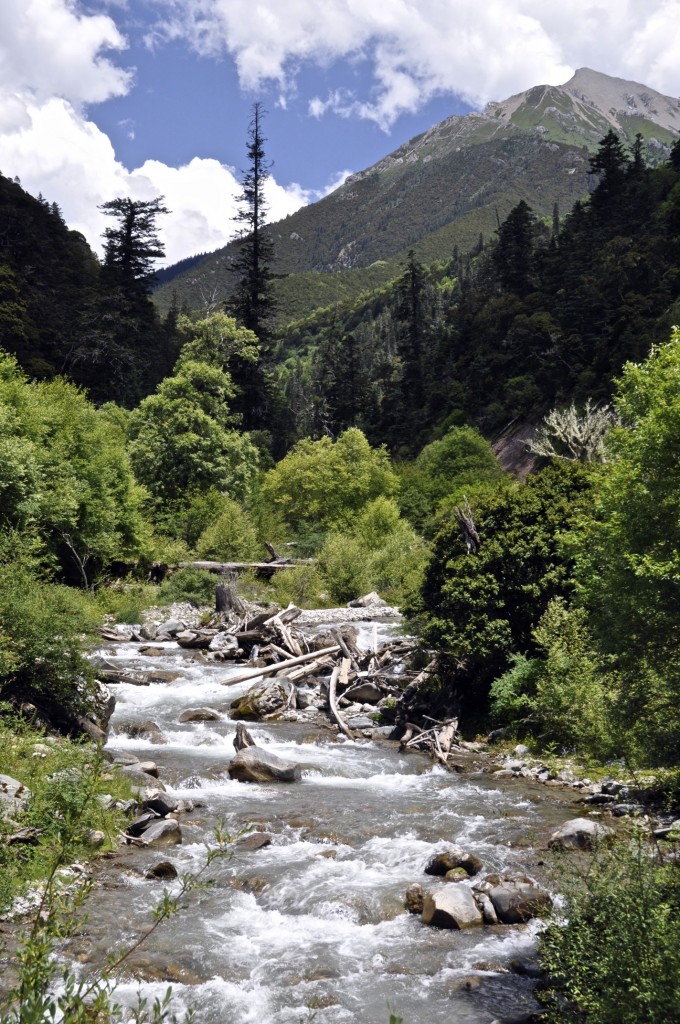
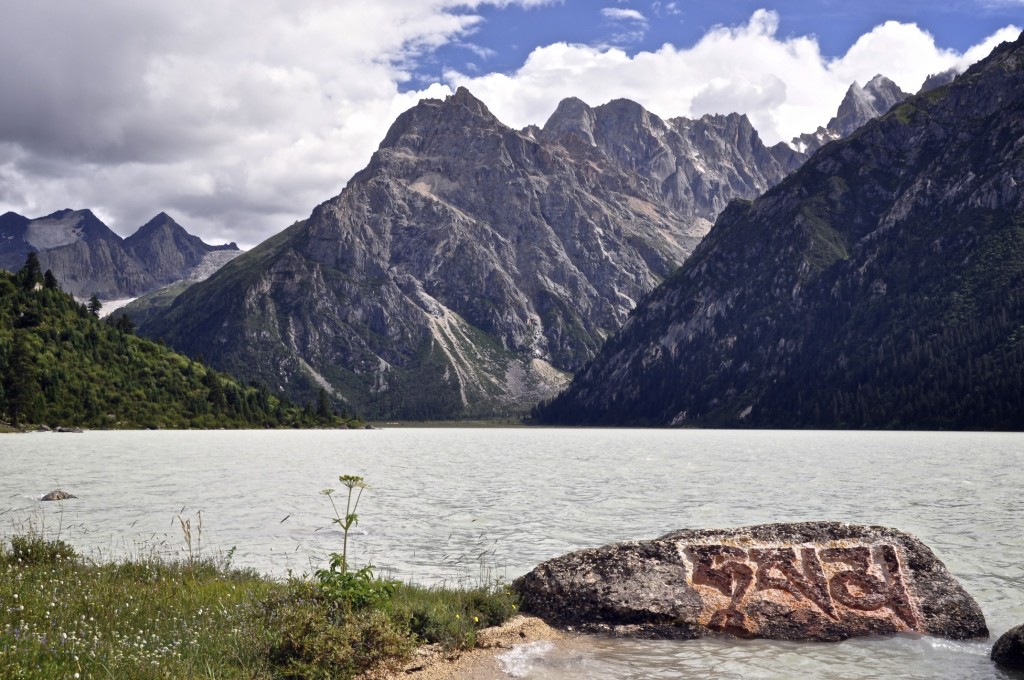
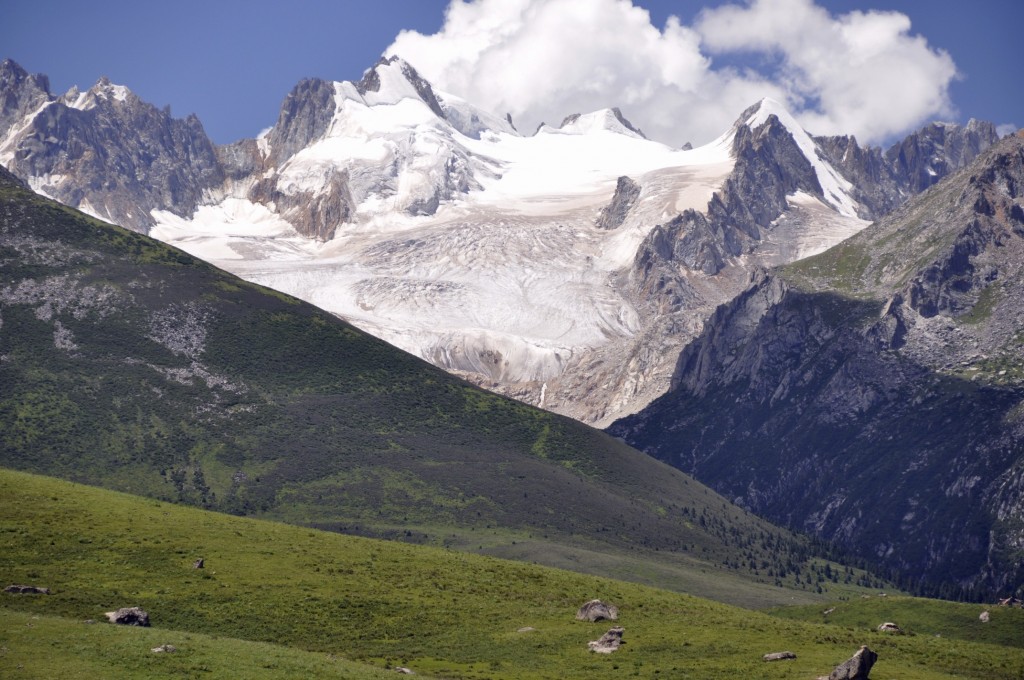
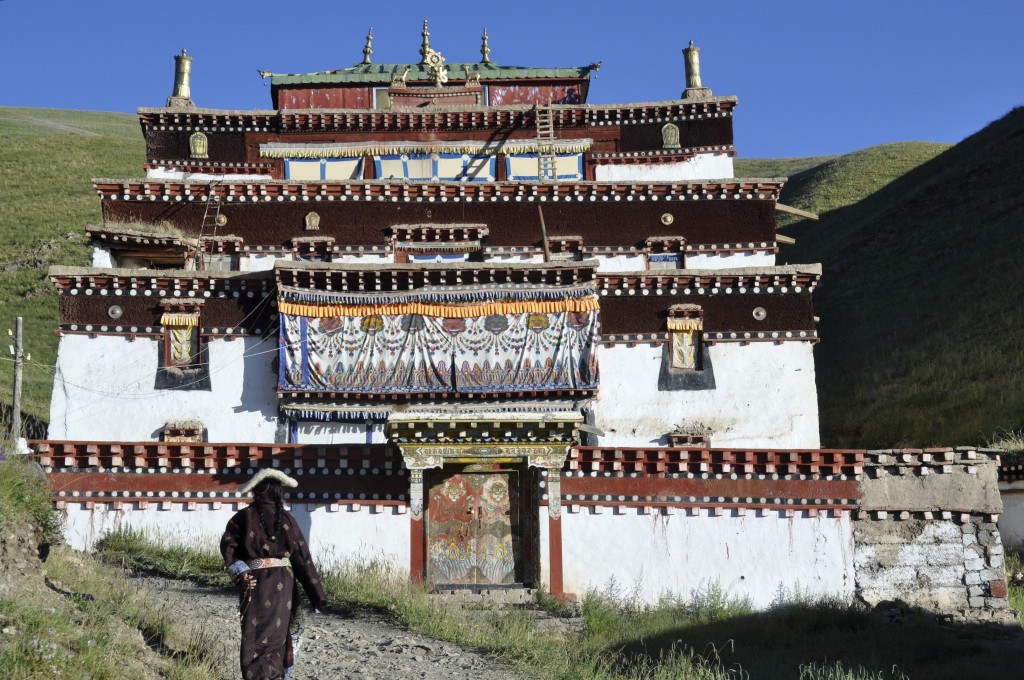
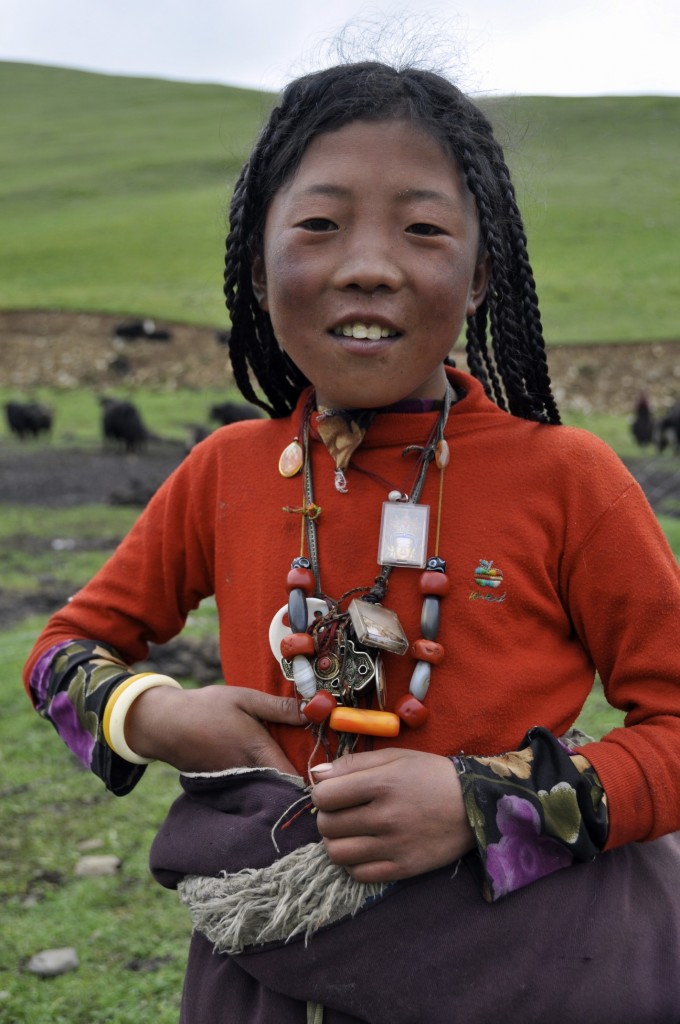
Pingback: Yading Nature Reserve « The Land of Snows
Pingback: Kangding « The Land of Snows
Pingback: Overland from Chengdu to Shangri La « The Land of Snows
Pingback: Why not Amdo and Kham?? « The Land of Snows
Pingback: Kham: Notes from a Mountain Journal — Part One
Pingback: Kham: The Road to Derge (Dege) — Part 2
Pingback: Kham: The Land of King Gesar
Pingback: Kham: Dzogchen and Kandze (Garze)
Pingback: Kham: The Rongdrag (Danba) Valley
Pingback: 2013 Tibet Travel Updates « The Land of Snows
Pingback: Extravagant Yak: Amazing Adventure Tours « The Land of Snows
Pingback: Sertar and Larung Gar « The Land of Snows
Pingback: 2013: Ganze Tibet Tour | Plateau Photo Tours
Pingback: 2013: Garze Tibet Tour | The Digital Trekker Blog & Photography
Pingback: 2014 Tibet Travel Regulations « The Land of Snows
Really nice place I will try my best to travel in kham and rest of other tibet places
Pingback: 2013: Garze Tibet Tour | Plateau Photo Tours
Pingback: Overland from Kangding to Yushu | The Land of Snows
Pingback: 2015 Tibet Travel Regulations | The Land of Snows
How can I travel to this area?
Please recommend?
This information makes me curious and the idea is born to come and visit this region. How beautifull is this country. I also want to make trekking .
Thanks for this site which is really well done, we intend to make a trip for 2 weeks in October from Chengdu in the area with 3-5 people : Tagong; Larung gar; Manigango; Pelpung; Pelyul; Yarchen gar.
We intend to take travel agency in Chengdu including the car, the driver and the accomadations.
Do you have some agencies to recommend?
What would be the approximated budget per person knowing that we would like to sleep in the monasteries as much as possible?
Thanks in advance.
Hello Lobsang,
Firstly, your website is the most helpful and informative one online for info on Tibetan culture and regions. Thank you for all your hard work.
1. if possible, would you please confirm the dates (Gregorian calendar if possible) for the Tsechu festival at Katok during summer 2016.
2. do you have a suggestion of how to discover other festival activity in the same area that could happen around the same date.
3. three friends and I plan to travel to Sichuan Kham area for about 12 days. We want the focus of the trip to be the Katok special festival, Derge Parkhang and perhaps see some towers such as those in the Danba area.
I look forward to your reply. Thank you again for your wonderful website!
Susan
Hi-
I’m trying to find some information about a possible route to go bicycle touring in the Kham/Amdo region for a few months starting in March or April of next year. Not sure of where makes sense to start — Lijiang / Shangri-la maybe? Anyway, any information you might be able to provide would be hugely helpful!
Thanks!
I would start in Shangri La and then cycle the route north to northeast to the town of Kangding. This is a fantastic route that would take you through many amazing places on the eastern Tibetan Plateau. Some of the best preserved Tibetan regions are along this route. For more info, email me at: thelandofsnows@gmail.com
Lobsang
Hi Lobzang-
Thank you very much for your reply. I have just sent you an email with more information! =)
-Matthew
Very good site. Thks for all your informations.
I would like to know if there are public bus between Litang and Ganzi through Xinlong. If not I think I have to pick up one in Xinduqiao coming from Kangding
Same question about the road from Lijiang/Shiqu to Deqen along Lancang Jiang
Is it possible to go there end of April begining of May ( snow?) Thks a lot for informations.
Anny
Hello….I own my own vehicles in Tibet so I do not use public buses and haven’t in more than a decade. Connecting small towns across the Kham region, small shared taxi’s go all over the region, including Lithang, Garze (Ganzi), Rangakha (Xindu Qiao) and Nyarong (Xinlong). These taxis leave when full and cost anywhere between 50 RMB and 150 RMB per person, depending on where you are going. These shared taxi’s are the main way to get around in the Kham region.
The Kham region can be visited anytime of year….even in mid winter.
Lobsang
Thanks a lot for your informations. Last year, when I arrive in Litang, I was told no bus to go to Ganzi… As it was heavily snowing, I do not look further. I think these shared taxi leave from the bus station or from the market.
Anny
Most areas of Kham use shared taxi’s. Don’t expect to find many bus routes between towns in Kham….the mode of transportation is shared taxis.
Lobsang
Thank you for your most informative post. Is this region accessible from Nepal?
The Kham region is no where near Nepal. To reach this area from Nepal, fly from Kathmandu to Chengdu, China and then take a bus from Chengdu to the Kham region.
Lobsang
Hi Lobsang,
we are arriving in Chengdu on 20th of September and our plan is to go to Tagong (probably Khampa Cafe hostel) for a few days. We would (group of 2 friends) love to spend some time (few days) with the Nomads – do you think its possible?
How much are hostels in the area?
Thanks!
Dalimil
How about Yarchen Gar is it close as well ?
Yarchen Gar is open, but there are government plans to take down parts of it as well (similar to what is going on at Larung Gar).
Lobsang
Hello.
Thank you, this post is great. Could you advise which parts would be accessible in January? I understand that it will be well below minus degrees but I have all of the appropriate gear and would be able to keep warm, it’s more an issue of what areas may be inaccessible/inadvisable?
Are there any areas which would be suitable for day walking, not necessarily treks?
Thanks,
Hannah
Nearly all areas of the Tibetan Plateau can be reached in winter, including just about everywhere in western Sichuan. Some treks are not advisable to do in winter due to the risk of serious storm, but otherwise all towns can be reached in winter.
Lobsang
Hello Lobsang,
How about Yarchen gar situation?
Is it open?
Thank you
Yarchen Gar remains OPEN. Only Larung Gar is closed to foreign travelers.
Lobsang
Hi Lobsang,
Do you know if Larung Gar is now open to foreign travelers? Now as of July 2018?
Thank you
Larung Gar remains CLOSED. All other areas of Sichuan province are open.
Lobsang
Hello,
Thankyou so much for putting together such a great website.I’m so overwhelmed right now and I need your help . We have 7 days arriving in early APR and want to start our journey from Beijing (2 days) flying into Chengdu and then to 1 of the cities to get a feel of Tibet.. as we do not want to rush ..we love wondering around shops ,bazaars interacting with locals and at the same time see culture architecture and nature.
What would you recommend their is so much to see and do and
As non-chinese speaking retired female foreigners
1. How easy and safe is it to contract a driver/guide to go from shangri-la to Daocheng last 2 weeks of April more or less?
2. Then contract another for Daocheng to Litang?
And so on until Chengdu.
3. Road/weather conditions are probably ok at this time of year?
4. Are foreigners restricted to certain guesthouses or hotels?
Hello
Is the tunnel under the Golok pass open?
Thank you
Yarchen Gar
Just a wee bit of info, in case it is useful for anyone: we were last week cycling to Yarchen Gar, coming from the south road (Qudeng village). The police let us in at the check point, we checked in a hotel, and a few hours later the local police boss came in. He told us foreigners are not allowed in Yarchen Gar (he called the dude who let us in, dude came in, and boss told him foreigners were not allowed in “new rule”), and we got a nice police-car ride to Acha (north west of YG).
cheers!
Lucile
Thanks for the update! We will keep a close watch on this.
Lobsang
Hi!
I’m going to chengdu this summer. I’m thinking about taking a bus to kangding and after seeing the area going further to daocheng to visit yang ding nature reserve. Will it be ok to do this journey with a chinese visum or do you need something special if you want to travel through the graze district?
Thank you for your blog!!!
All you require is a Chinese visa, as China is the only country you will be traveling in. Only the Tibet Autonomous Region requires an organized tour. You will be in Sichuan Province, so this will not apply to you. Enjoy your journey!
Lobsang
Dear Lobsang,
Much appreciate your efforts on putting it all together. We are looking for public bus connecting Zhongdian and Yading in October. We only have 2 people so renting a car is not an ideal option for us.
It seems that there is one bus a day connecting this two places according to my research:
– Zhongdian to Daocheng: 8am
– Daocheng to Zhongdian: 6.10 am
Do you have any tips on the quality of the road and whether it is difficult to secure tickets?
Thank you so much!
Can I know what it means by Larung Gar being closed to foreigners ?
Does that means I cannot enter the town or the institute ?
Can I still see that classic scene which everyone post showing all the red houses if it is closed to foreigners ?